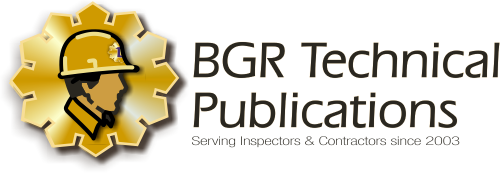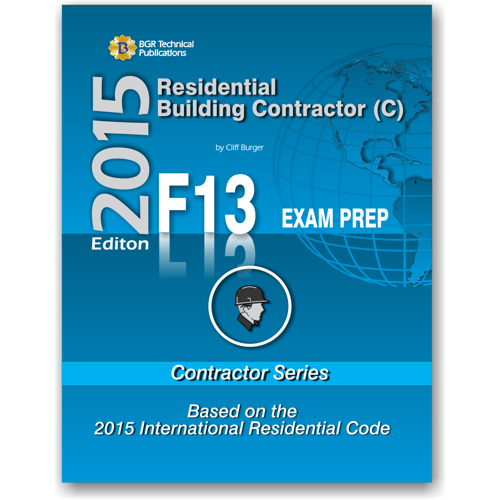F13
National Standard Residential Building Contractor
2015
710
Code Questions
Study Guide and
Practice Questions Workbook for the ICC
Residential Building Contractor “C” Certification Exam F13
Based
on the 2015 ICC Residential Building Code
There are 80 questions on the Standard Residential Building Inspector “C” Exam
That is equivalent to taking the exam over
5 times!!
The Result:
Passed
All Questions are based on the ICC International Residential Code
2015 Edition
by Cliff Burger, A.S. Electronics, ICC Certifications held: B-2, B-1, E-1, M-1, P-1 Other: CompTIA A+, Network+, 30 years in the Construction Industry as a Building Contractor, Master Electrician, Electrical Contractor and Businessman.
by Cliff Burger, A.S. Electronics, ICC Certifications held: B-2, B-1, E-1, M-1, P-1 Other: CompTIA A+, Network+, 30 years in the Construction Industry as a Building Contractor, Master Electrician, Electrical Contractor and Businessman.
This effective tool will show you a quick and easy way to learn and remember the code while you practice for taking the Inspector's exam. It will show you a system of how to study the code most effectively with efficient use of time, and at the same time train you become an expert on finding the answers that you need to lookup in the code reference quickly and accurately.
While merely reading and studying the code can help you learn. it would take a long time to master because of the extremely large amount of data, exceptions and variations it contains. It is almost impossible to have all that information flawlessly in your mind. In fact, that is why the tests are open book. The best inspectors rely on the code book, not their recollection of the code. It is extremely important to be right on the safety issues in the code.
If you have a basic understanding of terminology and you study using my practice question study technique, you should easily be able pass the exam first time and become an expert on the code at the same time while making the most of your time.
By doing practice questions and the taking timed practice exams along with special learning techniques this book will help you:
1. Increase your speed at finding the answers making you an expert on where to find the answers in the code book, this is very important because this is the only way to be correct 100% of the time.
2. Learn the answers to many of the questions that will be on the test and thereby be able to answer them from recall memory, saving you precious time.
3. Become an expert at managing that time during the test, through test taking experience.
Quickly learn a system of study that does do not waste time and is very effective in learning the material quickly and accurately. Using questions to learn is far superior to just reading. When you read a question your mind in forced to think, after all you now have a problem to solve. In order to pursue the answer, your mind is required to interpret what that problem is, then process that information, and finally find a solution through recall, or research. This system of study will teach you how to both recall the answers and research the answers quickly and effectively, in fact, you will find that this technique can be used for anything you want to learn and remember throughout your life.
Practice Questions
The first section of practice questions contains hundreds of questions similar to those on the exam. It is designed to help you learn the code and give you the practice need to the find answers quickly. The second section contains are several Timed Practice Tests, which will hone your skills further, only this time with the element of time in play, just like the real exams. When you are finished you should be a master.
Now, go into that exam room with experience, knowledge and confidence, and pass that exam.
Cliff Burger
The Test Questions Answers and References are in back of the book.
You can Pass all the exams first try with these study questions!
Good Luck!
ICC®, IRC®, IBC®, International Code Council®, NFPA®, NEC®, and National Electrical Code® are all registered trademarks of their respective owners and are used here for identification purposes only.


